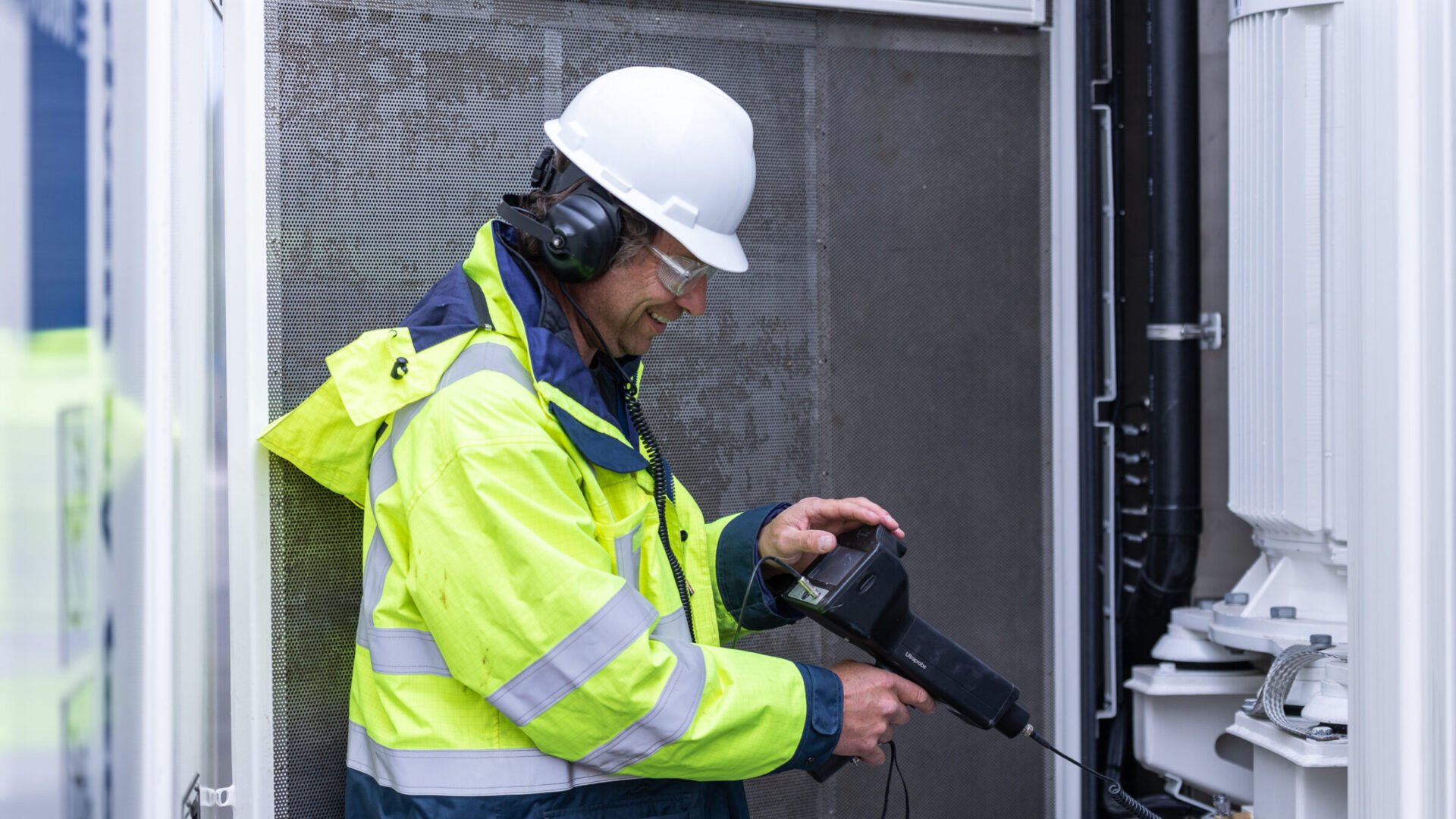What is Ultrasound?
Ultrasound is similar to the dynamic pressure that the human ear can hear as audible sound, but occurs at frequencies from 20 kHz to 100 kHz. Far above the human audible range. The range of human hearing is on average from 20 Hz to 16 to 20 kHz.
All operating ‘rotating’ equipment, pressure or vacuum leaks and ‘static’ electrical systems produce a broad spectrum of ultrasound sound due to friction, impact, turbulence, electrical discharge, among others.
What is ultrasound research?
Ultrasound testing is a non-destructive testing method aimed at measuring and recording high-frequency sound waves produced by equipment. The high-frequency ultrasound components naturally have an extremely short waveform and are therefore highly directional. It is therefore relatively easy to determine the exact location of these signals and to separate them from background noise from the other equipment in operation.
Friction and impact are side effects of mechanical equipment. For example, a ball bearing experiences friction as the shaft and balls rotate. If the friction increases, for example due to imbalance, the bearing will be subjected to additional load. This results in bearing damage and the unplanned stopping of the equipment.
Electrical partial discharges, arcing and corona can occur in electrical installations and cause ionisation. This disturbs the surrounding air molecules, generating high-frequency sounds. Ultrasound inspection can detect the emission of these high-frequency sounds.
The specific sound quality of each type of emission is made audible (headphones) and the intensity is made visible on the display of the Ultrasound analysis equipment. Using advanced Fast Fourier Transfer spectrum & Time Series analysis, the recorded sounds are analysed for anomalies. The findings are reported in an inspection report.
Why Ultrasound inspection?
When electrical devices such as transformers, switchgear, insulators, separators, etc. fail in function, the consequences can be catastrophic. This applies to industrial plants as well as energy transmission and distribution systems. With the use of ultrasound inspection, arcing, tracking, corona phenomena, leakage detection and mechanical looseness, for example, can be detected in time. This makes it possible to act appropriately within the planned time.
Normally, electrical equipment does not make noise. Although some equipment such as a transformer produces a noise of 50Hz or 60Hz (humming) or emits a constant mechanical noise. If incipient electrical discharges occur, the surrounding air is ionised , producing turbulence (sound). Using Airborne Ultrasound inspection, this turbulence can be detected and electrical problems can be traced from this principle. Electrical equipment and devices can therefore be perfectly inspected using ultrasound for the presence of, among other things:
- Corona (above 1kV)
- Tracking (spark discharge)
- Partial discharge
- Arcing
- Leak detection (e.g. of compressed air)
- Mechanical vibrations (transformers)
Corona
An electrical discharge around conductors of 1kV or more, ionising the surrounding air (forming a blue or purple glow) and forming Ozone. Ozone conducts electric current and can create a direct path to earth, which can have disastrous consequences in closed switchgear in particular. Corona also produces nitrogen, which when combined with moisture forms nitric acid. This acid further corrodes the insulating material, as well as metal components. This introduces additional thermal problems.
Tracking
Often also referred to as ‘arcing (spark discharge)’. Tracking follows the path of damaged insulation. Electricity follows the path to earth using dirt and other contaminants until it reaches a point of transfer.
Partial discharge
An electrical discharge or spark that occurs within a high-voltage insulation system. The discharge bridges only part of the gap between two charged surfaces, or a charged surface and earth, so it is only a partial discharge. Partial Discharge occurs within electrical components such as in transformers and insulated bus bar systems and is caused by ageing of the insulation.
Leak detection
Leak detection is an inspection technique used to detect and identify leaks in various systems at a very early stage through ultrasonic detection. Leak detection is not only crucial for maintaining the integrity and efficiency of systems, but also provides cost savings. Where compressed air is used as an energy source, its leakage can eventually lead to significant financial losses. By applying leak detection, we can identify and repair leaks, preventing unnecessary loss of compressed air, reducing operational costs, as well as reducing toxic emissions. Of course, leaks of other gases can also be detected.
This also applies to processes performed under vacuum. Leaks in vacuum systems can reduce the efficiency of production processes and affect the quality of end products. By detecting and fixing leaks in time, the reliability of vacuum systems can be ensured and productivity optimised.
Arcing
An electrical discharge through a normally non-conductive medium such as air to another conductive object. It is a fault condition in electrical equipment and can lead to “electrical” fire and/or explosion. (Lightning is a good example of this).

